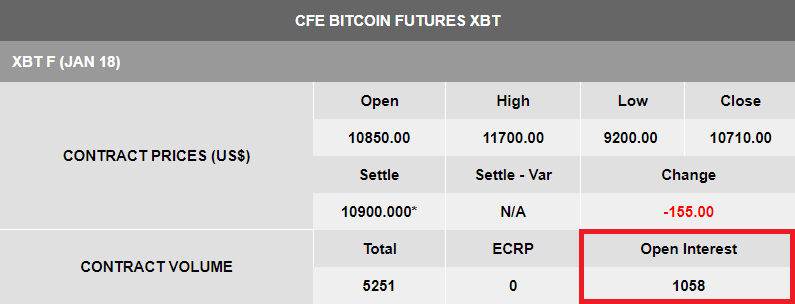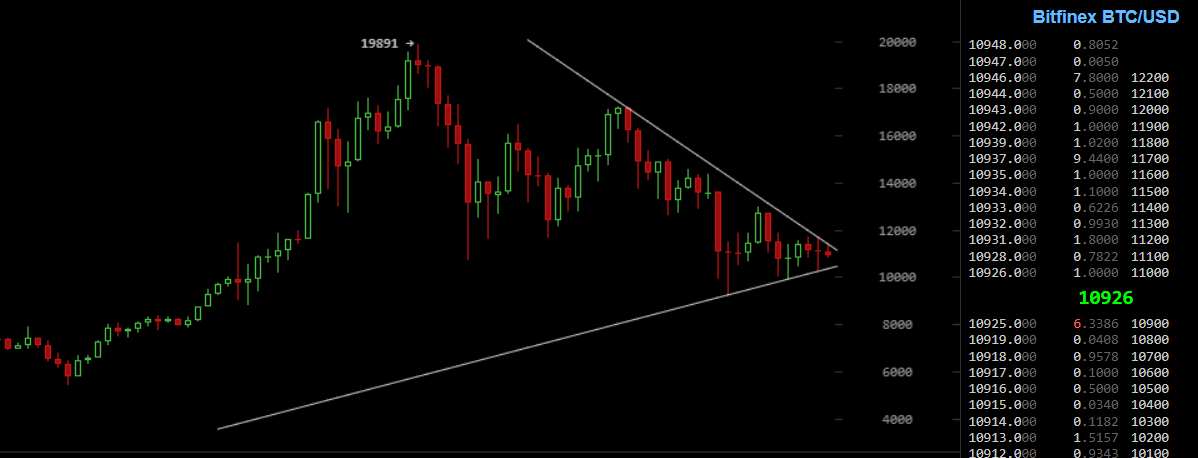Trading is arrogant, be it on Wall Street or across crypto exchanges. In order to trade rather than hodl, you must fundamentally believe you’re smarter, more disciplined or better informed than the other half of the market. Time will tell. But as long as you’re trading, we’ve established that you’re at least more arrogant than the other half of the market. Bitcoin is arrogant. In order to be a bitcoiner, you must fundamentally believe that a bunch of software engineers can create a better form of money than economists, governments and central banks.
Also read: Why Do We Fall, Bruce?
Wall Street Manipulation and Willy Bot
If you are a bitcoin trader (rather than just a hodler) you must be really smart. Or at least you must think you are really smart. A common trait I see in bitcoin traders is that they have theories for everything. They see through it all; the Mt.Gox “Willy bot” bubble, the Chinese wash trading, the Chinese government insider trading, the stop-hunting, Spoofy, Tether & Jamie Dimon trying to buy up cheap bitcoin. The latest conspiracy: Wall Street shorting futures and manipulating spot prices near settlement.
The price of $BTC over the last ten days, with the CBoE and CME futures settlement date/times highlighted. Make of this what you will. #cryptocurrency #bitcoin #futures #therearenoanswers pic.twitter.com/w0DWPmhQDb
— cryptoscopia (@cryptoscopia) January 26, 2018
I’m not saying that these theories aren’t sometimes correct. The Willy bot really did exist, and Chinese volumes dropped 90% after zero fee trading was banned. What’s important is that regardless if they’re correct or not, these theories become significant drivers in the bitcoin price. Many times, they create the price movement they are afraid of, like a Harry Potter boggart. This week, either Wall Street drove spot exchanges prices downwards in an act of manipulation, or it was the traders who thought Wall Street would do that did.
The CME and Cboe are traditional financial marketplaces where institutional traders (“Wall Street”) have been able trade bitcoin futures contracts since December. A futures contract is a contract to trade a certain thing for a certain price at a certain time. The Cboe and the CME futures contracts are cash-settled, so what is traded in practice is the price difference between what one entered the contract at vs. the “real” price at the time of settlement.
The first batch of Cboe bitcoin futures settled on Jan 17. The first batch of CME bitcoin futures settled on Jan 26. Futures contract entry prices are negotiated on the Cboe & CME exchanges themselves, but the “real” price at settlement is determined by the spot exchanges. For Cboe, it’s determined by a Gemini auction, and for CME, it’s a composite of Bitstamp, GDAX, Itbit and Kraken.
What the Market Believes
From the Gemini auction data page we can see that the volume for the particular auction (Jan 17) setting the price for the Cboe futures was ~6.72 million USD.

As a comparison, let’s look at the auction from the previous large dump (22 Dec):

On that day, the volume was only ~1.53 million USD. Even on the most active day of December, the volume was ~3.73 million at most. So why was there such a huge spike in interest on Jan 17?
Could the reason perhaps have been the 1,058 Cboe bitcoin futures contracts (>11 million USD) that were still open on Jan 17?

Personally, I don’t think so. We would have to look at the Cboe cumulative delta for that period to properly gauge how many of those were unhedged short positions, but even if we assume 100% were short positions, 11 million USD still doesn’t sound like enough at stake lot to pull of such a stunt.
The Gemini auction doesn’t exist in a vacuum. If you wanted to artificially push the price down, you would cause an arbitrage opportunity between Gemini and the rest of the world. But for the sake of argument, let’s assume you were able to push the price down on Gemini ~10%, we’re still only talking about 11 million USD worth of contracts open. The heist would have been around 1.1 million USD — or in Wall Street terms, “a penny”, and not a rational amount to engage in market manipulation.
But that aside, the market believes what the market believes. If the market believes bitcoin dumped because of the Cboe futures on Jan 17, the market will believe bitcoin will dump again because of the CME futures on Jan 26.
So, What is Your Trading Tip Exactly?
I believe we are about to break out from an extended period of consolidation. I’ve been hoping to get in some long positions from ~$8k, but it appears to me that we would have gotten there thanks to the CME futures FUD if $8k was really going to happen. As the market runs out of paranoia, I expect us to start a Lightning Network-positivity-fueled recovery to ~$13000-14000 in the coming weeks.

I’m opening a medium-sized long position (saving some of my trading balance in case we do get a chance at ~$8k). As usual, I timestamp my trades on Twitter for transparency so there can be no post-editing until this article is processed by Bitcoin.com.
Long XBTUSD from $11012 on BitMEX.
Timestamp for future reference.
— Eric Wall (@ercwl) January 26, 2018
As a final note, I find it a bit ironic that the category of people who are most determined that the market is rigged is the same category of people who are most actively trading it. I think of it as the sailor superstitions of the crypto seas.
What are your thoughts on market manipulation? Let us know in the comment section below!
Images via Shutterstock, Twitter.
Disclaimer: Bitcoin price articles and markets updates are intended for informational purposes only and should not to be considered as trading advice. Neither Bitcoin.com nor the author is responsible for any losses or gains, as the ultimate decision to conduct a trade is made by the reader. Always remember that only those in possession of the private keys are in control of the “money.”
The post Trading Tip `The Wall´ – Wall Street Price Manipulation? Go Long appeared first on Bitcoin News.
Powered by WPeMatico
